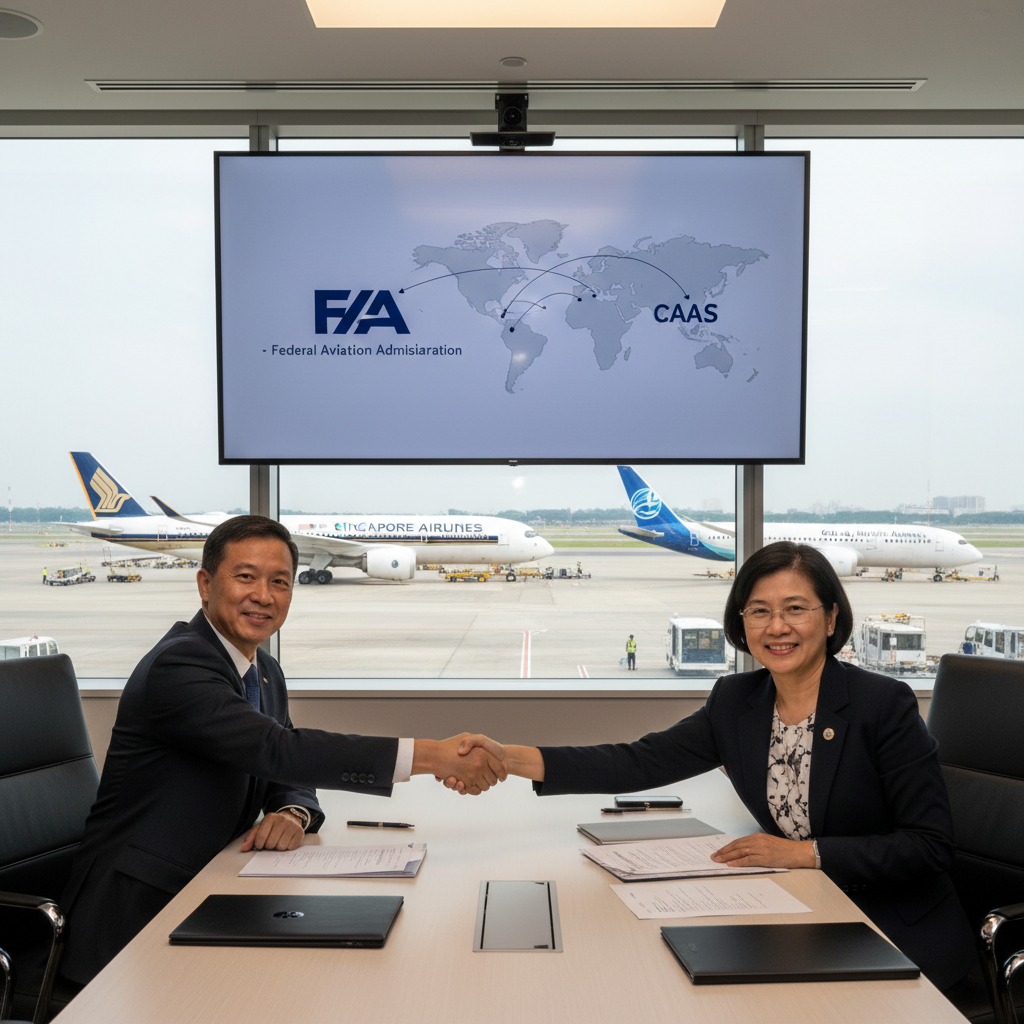Physical Address
304 North Cardinal St.
Dorchester Center, MA 02124
Physical Address
304 North Cardinal St.
Dorchester Center, MA 02124
Global aviation news tracker
Global aviation news tracker

FAA CAAS safety pact signed September 26 aims to deepen regulatory ties and raise safety standards across Asia‑Pacific routes.
The Federal Aviation Administration (FAA) and the Civil Aviation Authority of Singapore (CAAS) formally agreed to expand aviation safety collaboration in a pact signed September 26. The memorandum focuses on closer regulatory cooperation, technical exchanges, and sharing best practices to strengthen global oversight.
Officials said the agreement is designed to help harmonize safety standards and support consistent oversight of commercial operations, including routes flown by Western carriers into and across the Asia‑Pacific region. While the pact does not change airline operations directly, it creates clearer pathways for regulators to coordinate on inspections, audits and safety data sharing.
For airlines and travelers this means more aligned certification processes and a smoother flow of safety information between the United States and Singapore. CAAS, Singapore’s national aviation regulator, and the FAA, the U.S. federal regulator, will exchange technical expertise and may collaborate on voluntary audits, training programs and rule‑making dialogue.
The agreement reflects a broader trend: aviation authorities are increasingly coordinating across borders to address complex safety challenges, from advanced aircraft systems to supply‑chain issues. For Western airlines operating long‑haul services to Singapore and other Asia‑Pacific hubs, the pact signals more predictable regulatory engagement and potentially fewer administrative hurdles.
Expect follow‑up announcements detailing specific joint activities, technical working groups and any pilot projects that come out of the collaboration. In the meantime, regulators and carriers will monitor how the new arrangement translates into day‑to‑day oversight improvements.